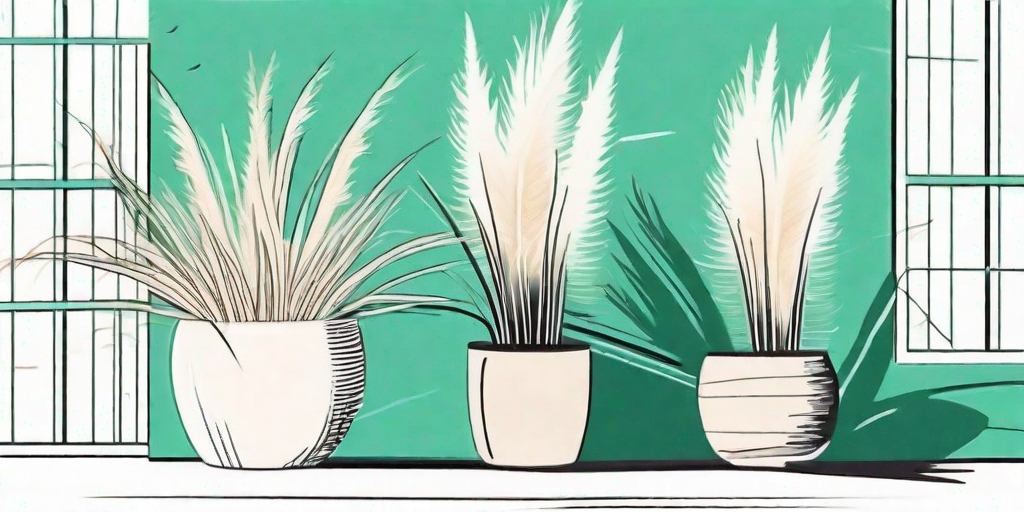
Pampas grass, also known as Cortaderia selloana, is the new darling of the gardening world. With its feathery plumes and tall, elegant stalks, it's no wonder this ornamental grass has taken Instagram, Pinterest, and garden centers by storm. But what if you don't have a sprawling garden to plant it in? Fear not, my green-thumbed friends, for pampas grass can be grown in pots too! Yes, you heard it right. You can get your pampas grass fix anywhere, anytime. Let's dive into the nitty-gritty of growing pampas grass in pots.
The Basics of Pampas Grass
Before we get into the potting details, let's take a moment to appreciate the beauty and versatility of pampas grass. Originating from the South American grasslands, this perennial grass is known for its tall, arching leaves and fluffy, white or pink plumes. It's a real showstopper in any garden, but it's also a bit of a diva, demanding plenty of sunlight and well-drained soil.
Now, you might be thinking, "A diva? In my living room? Really?" But don't worry, pampas grass can be tamed, and with the right care, it can thrive in a pot. So, let's get down to business and learn how to grow pampas grass in pots.
Choosing the Right Pot
When it comes to pots, size matters. Pampas grass can grow up to 10 feet tall and spread up to 6 feet wide. So, you'll need a large, sturdy pot that can accommodate this growth. A pot that is at least 24 inches in diameter and depth is a good starting point.
Material-wise, opt for a pot made from clay, ceramic, or wood. These materials are heavy enough to support the weight of the pampas grass and prevent it from toppling over. Plus, they provide good insulation and drainage, which are crucial for the health of your pampas grass.
Planting Your Pampas Grass
Now that you've got your pot, it's time to plant your pampas grass. But before you start, remember to wear gloves. Pampas grass leaves are sharp and can cause cuts and scratches. Safety first, folks!
Start by filling your pot with a well-draining potting mix. Pampas grass isn't picky about soil, but it does prefer a well-draining one. So, choose a potting mix that contains perlite, vermiculite, or sand. These materials improve drainage and prevent waterlogging.
Next, plant your pampas grass in the center of the pot. Make sure the crown of the grass (where the leaves meet the roots) is level with or slightly above the soil surface. Then, fill in around the grass with more potting mix and firm it down gently.
Finally, water your pampas grass thoroughly. The soil should be moist but not waterlogged. And voila, you've just planted your pampas grass!
Caring for Your Potted Pampas Grass
Now that your pampas grass is happily potted, it's time to learn how to care for it. Pampas grass is a low-maintenance plant, but it does need some TLC to look its best.
Firstly, pampas grass loves the sun. So, place your pot in a sunny spot where it can get at least six hours of sunlight a day. If you're growing your pampas grass indoors, place it near a south-facing window for maximum sunlight exposure.
Secondly, water your pampas grass regularly. The soil should be kept moist, but not waterlogged. Overwatering can lead to root rot, which is a death sentence for your pampas grass. So, water thoroughly, but make sure the pot has good drainage.
Lastly, feed your pampas grass with a slow-release fertilizer in the spring and summer. This will provide the nutrients it needs to produce those gorgeous plumes.
FAQs About Growing Pampas Grass in Pots
Now, let's tackle some frequently asked questions about growing pampas grass in pots.
Can I grow pampas grass from seeds?
Yes, you can grow pampas grass from seeds. However, it's a slow process and it can take up to three years for the grass to produce plumes. If you're impatient like me, you might want to opt for a pampas grass plant instead.
Does pampas grass need to be pruned?
Yes, pampas grass benefits from an annual prune. Pruning helps to remove old, dead leaves and promotes new growth. The best time to prune is in late winter or early spring, before the new growth starts.
Can pampas grass survive winter?
Pampas grass is a hardy plant and can survive winter temperatures down to -20 degrees Fahrenheit. However, if you live in a colder climate, you might want to bring your potted pampas grass indoors during the winter to protect it from extreme temperatures.
Conclusion
So there you have it, the ultimate guide to growing pampas grass in pots. With the right pot, the right care, and a little bit of patience, you can enjoy the beauty of pampas grass anywhere, anytime. So why wait? Get your pampas grass fix today!
Remember, a potted pampas grass is not just a plant, it's a statement. It's a declaration of your love for nature, your appreciation for beauty, and your willingness to challenge the norms. So go ahead, flaunt your pampas grass with pride. After all, you're not just a gardener, you're a pampas grass connoisseur!















